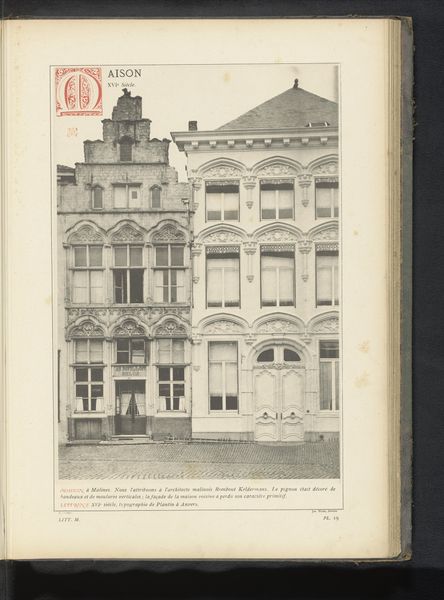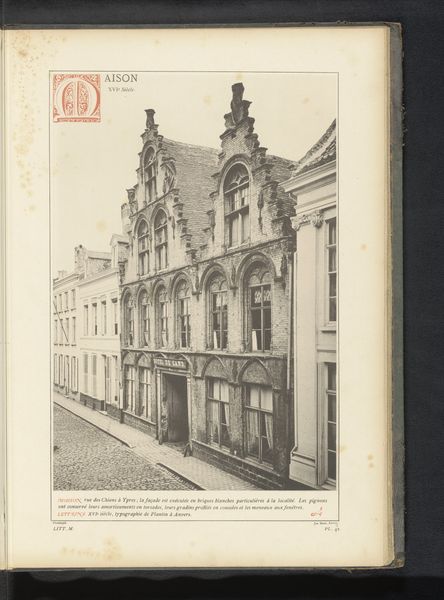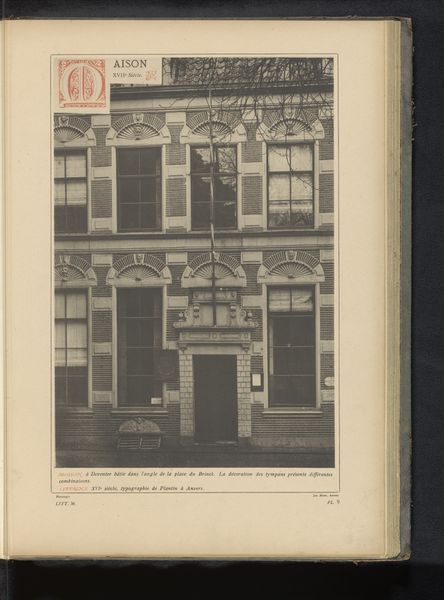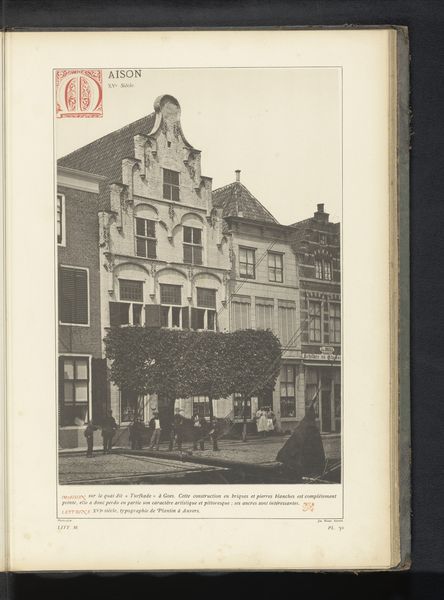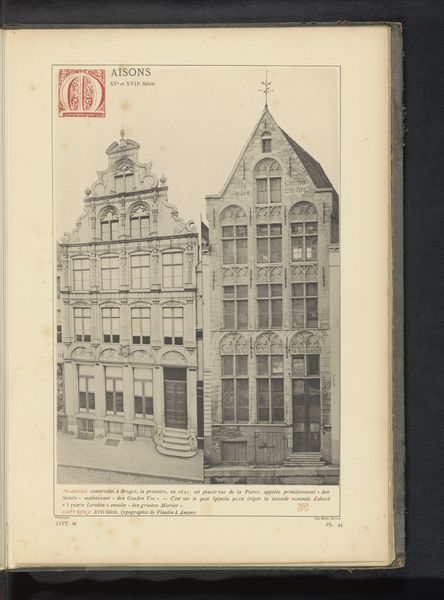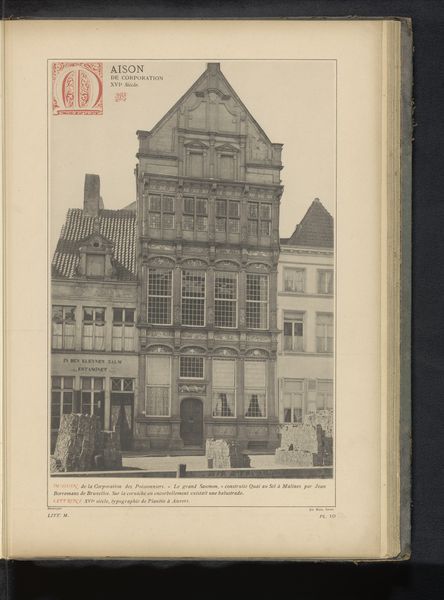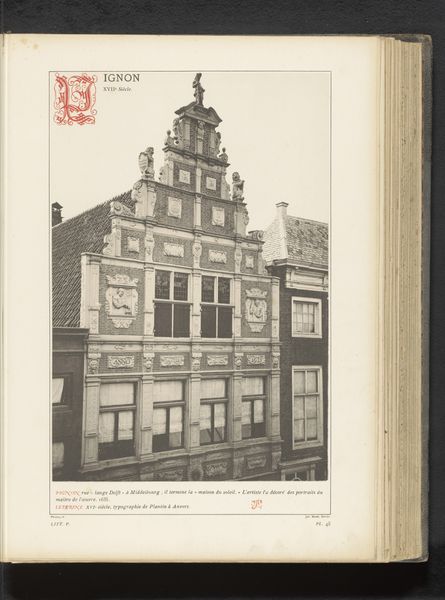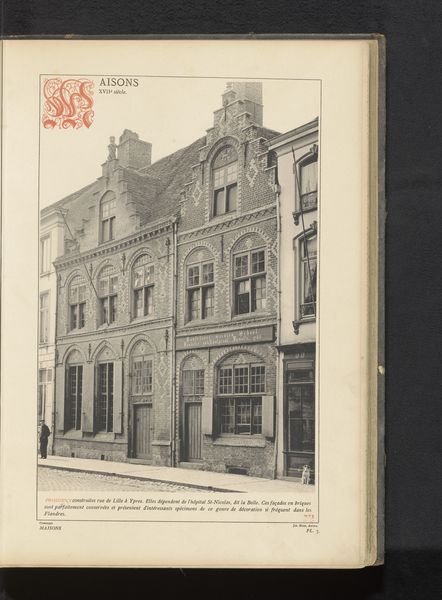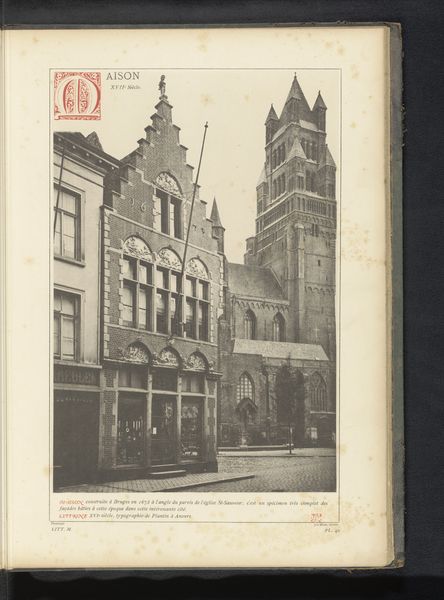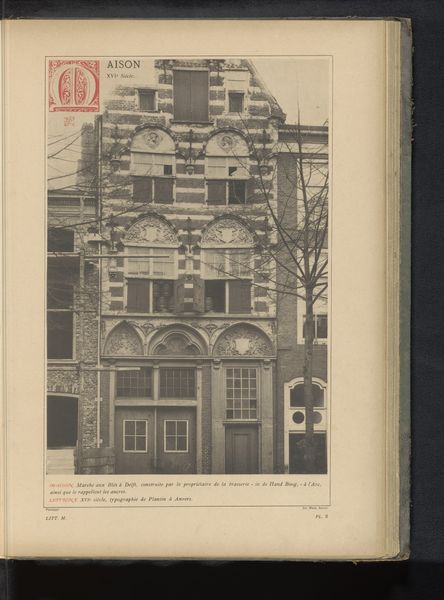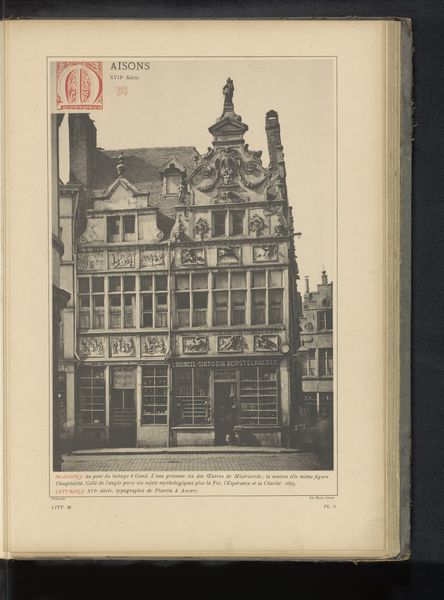
print, photography, architecture
# print
#
photography
#
cityscape
#
architecture
Dimensions: height 341 mm, width 230 mm
Copyright: Rijks Museum: Open Domain
Curator: Here we have "Gezicht op een huis uit 1571 in Zwolle"—which translates to "View of a house from 1571 in Zwolle"—presented as a photographic print. Its creation date is estimated to be before 1880. What strikes you initially about this image? Editor: The somber stillness of it, like a forgotten stage set. The severe lines of the building loom in monochrome—almost ghostly. One wonders, who were the dames and the craftsmen and what kind of labor unfolded inside this house? Curator: The words “Dames Hand Werken,” painted above the ground floor windows certainly suggests something interesting: women's handiwork happening within. In thinking about process, what do you see at play here beyond what is represented? Editor: Well, let's not overlook the labor behind its construction—the cutting and setting of stones, brick by brick. Beyond architecture, this image's journey to our eyes is its own story. The photograph and printmaking is itself a collaboration across multiple trades: photographers, printers, and publishers who produced and circulated this image. These people also gave themselves jobs via labor that also produced these images. Curator: I agree; there's a rich confluence of artisanal labor encapsulated in this single print. It makes you wonder, what survives and what is lost in translation as crafts evolve into industry and then are captured as photographs? Does the 'aura' of that handcraft carry over, or is it muted by the photographic lens and the mechanization of print? Editor: Aura, maybe! More profoundly, it reminds us of the lives and labor often made invisible in grand narratives of history and progress. Even the arrangement of the image is curious – framed almost claustrophobically by other, plain buildings looming on either side of it. It implies the social texture of labor existing at the periphery too – or at least the labor of others made into nothing at all! Curator: Yes! It makes me think how we tend to edit history by foregrounding only the extraordinary while muting the everyday labor it’s erected upon. Editor: Precisely! A ghostly document not merely about what once stood but equally about what's perpetually overlooked in the construction of history.
Comments
No comments
Be the first to comment and join the conversation on the ultimate creative platform.
